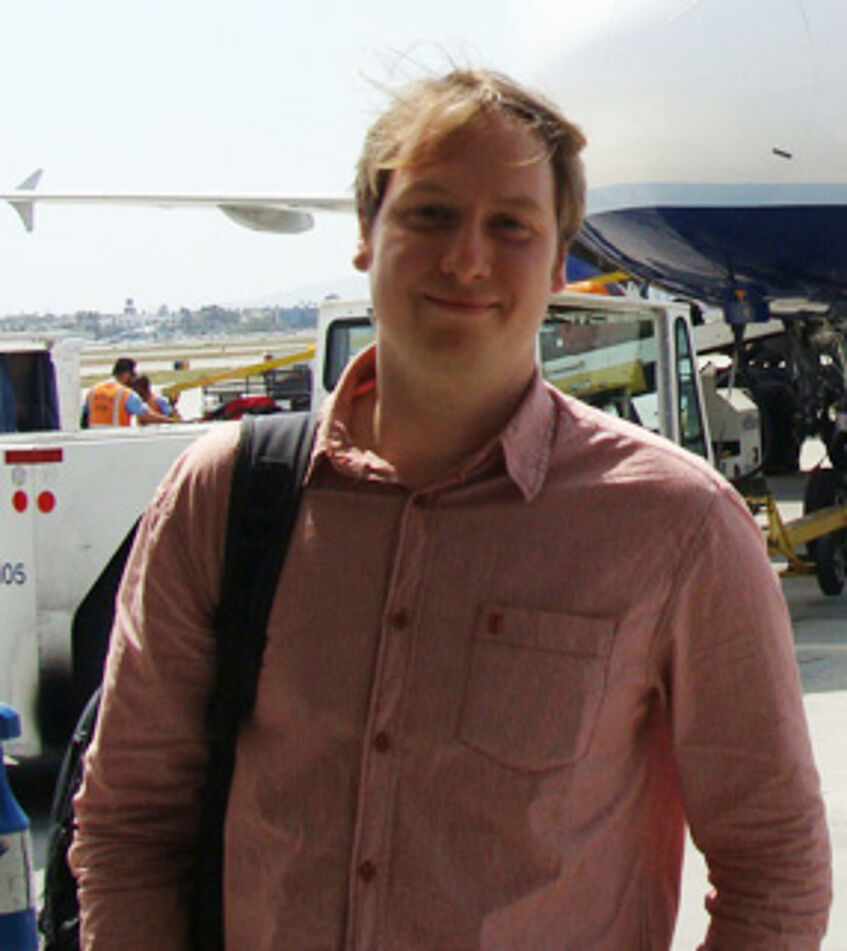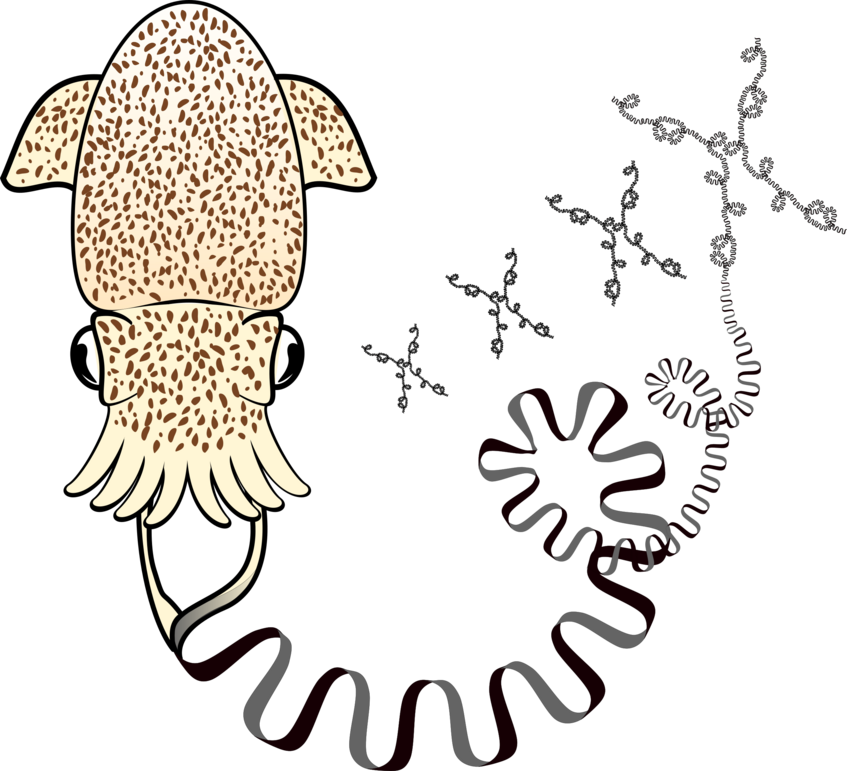
Prof. Oleg Simakov
Head of Department of Neurosciences and Developmental Biology
BioSketch
Team
Publications
Funding
Evolution of Metazoan Genome Architecture

We study major transitions in metazoan evolution from the perspective of the underlying genomic changes. Over the past years, we have contributed to the broader sampling of metazoan genomes, revealing ancestral metazoan and bilaterian genomic architectures and their diversification patterns. While we can trace back many gene families to the ancient metazoan ancestor, we also find many of them linked at both micro- (local gene cluster) and macro-syntenic (chromosomal) levels. The functional significance of most of those linkages during development is unknown. Having a broad phylogenetic focus we aim to (1) characterize and expand our knowledge of conserved and novel gene linkages and their associated (non-coding) elements across metazoans, (2) study their evolutionary dynamics through comparative genomics and modeling approaches, and (3) establishing molecular tools for investigating their role during development and clade-specific innovation. Inspired by the analysis of the octopus genome, current research focuses on characterizing the genomes of other cephalopod species, in particular investigating the gene linkage and repetitive element dynamics and their role in the emergence of cephalopod novelties. We are also contributing to the functional study of gene linkages in an emerging cephalopod model system Euprymna scolopes (Hawaiian bobtail squid) and the cnidarian hydra (Hydra magnipapillata).
Oleg Simakov studied Biology and obtained the Diploma degree at the University of Heidelberg, conducting his Diploma research in the group of Daniel Rokhsar at the University of California, Berkeley.
In 2013 he obtained his PhD working in the group of Detlev Arendt at EMBL Heidelberg. The work was conducted as a part of the EMBL International PhD Programme and co-supervised by Axel Meyer at the University of Konstanz, Germany.
In 2013 he worked as a research assistant in the group of Thomas Holstein, University of Heidelberg, followed by a postdoctoral appointment at the Okinawa Institute of Science and Technology Molecular Genetics Unit (led by Sydney Brenner and Daniel Rokhsar).
Since 2017 he is a tenure-track group leader at the University of Vienna
Currently, we are looking for a PhD student and postdocs! Contact: oleg.simakov@univie.ac.at
Selected Publications
-
Schultz D*, Haddock S, Bredeson J, Green E, Simakov O*, Rokhsar D*, "Ancient gene linkages support ctenophores assister to other animals", Nature, 2023 Jun;618(7963):110-117. doi: 10.1038/s41586-023-05936-6.
-
Schmidbaur H, Kawaguchi A, Clarence T, Fu X, Hoang OP, Zimmermann B, Ritschard EA, Weissenbacher A, Foster JS, Nyholm SV, Bates PA, Albertin CB*, Tanaka E*, Simakov O*. Emergence of novel cephalopod gene regulation and expression through large-scale genome reorganization. Nat Commun. 2022 Apr 21;13(1):2172. doi: 10.1038/s41467-022-29694-7.
-
Albertin CB, Medina-Ruiz S, Mitros T, Schmidbaur H, Sanchez G, Wang ZY, Grimwood J, Rosenthal JJC, Ragsdale CW*, Simakov O*, Rokhsar DS*. Genome and transcriptome mechanisms driving cephalopod evolution. Nat Commun. 2022 May 4;13(1):2427. doi: 10.1038/s41467-022-29748-w.
-
Meyer A*, Schloissnig S, Franchini P, Du K, Woltering J, Irisarri I, Wong WY, Nowoshilow S, Kneitz S, Kawaguchi A, Fabrizius A, Xiong P, Dechaud C, Spaink H, Volff JN, Simakov O*, Burmester T*, Tanaka EM*, Schartl M*. Giant lungfish genome elucidates the conquest of land by vertebrates. Nature. 2021 Jan 18. doi:10.1038/s41586-021-03198-8.
-
Simakov O*, Marlétaz F, Yue JX, O'Connell B, Jenkins J, Brandt A, Calef R, Tung CH, Huang TK, Schmutz J, Satoh N, Yu JK, Putnam NH, Green RE, Rokhsar DS*. Deeply conserved synteny resolves early events in vertebrate evolution. Nat Ecol Evol. 2020 Jun;4(6):820-830. doi: 10.1038/s41559-020-1156-z.
-
Zimmermann B, Robert NSM, Technau U, Simakov O*. Ancient animal genome architecture reflects cell type identities. Nat Ecol Evol. 2019 Aug 5. doi:10.1038/s41559-019-0946-7.
-
Belcaid M, Casaburi G, McAnulty SJ, Schmidbaur H, Suria AM, Moriano-Gutierrez S, Pankey MS, Oakley TH, Kremer N, Koch EJ, Collins AJ, Nguyen H, Lek S, Goncharenko-Foster I, Minx P, Sodergren E, Weinstock G, Rokhsar DS, McFall-Ngai M, Simakov O*, Foster JS*, Nyholm SV*. Symbiotic organs shaped by distinct modes of genome evolution in cephalopods. Proc Natl Acad Sci USA. 2019 Feb 19;116(8):3030-3035. doi: 10.1073/pnas.1817322116. (cover)
-
Simakov O*, Kawashima T*, Marlétaz F, Jenkins J, Koyanagi R, Mitros T, Hisata K, Bredeson J, Shoguchi E, Gyoja F, Yue JX, Chen YC, Freeman RM Jr, Sasaki A, Hikosaka-Katayama T, Sato A, Fujie M, Baughman KW, Levine J, Gonzalez P, et al. Hemichordate genomes and deuterostome origins. Nature. 2015 Nov 26;527(7579):459-65. doi:10.1038/nature16150.
-
Albertin CB*, Simakov O*, Mitros T, Wang ZY, Pungor JR, Edsinger-Gonzales E, Brenner S, Ragsdale CW, Rokhsar DS. The octopus genome and the evolution of cephalopod neural and morphological novelties. Nature. 2015 Aug 13;524(7564):220-4. doi:10.1038/nature14668. (cover)
-
Simakov O, Marletaz F, Cho SJ, Edsinger-Gonzales E, Havlak P, Hellsten U, Kuo DH, Larsson T, Lv J, Arendt D, Savage R, Osoegawa K, de Jong P, Grimwood J, Chapman JA, Shapiro H, Aerts A, Otillar RP, Terry AY, Boore JL, et al. Insights into bilaterian evolution from three spiralian genomes. Nature. 2013 Jan 24;493(7433):526-31. doi:10.1038/nature11696.
